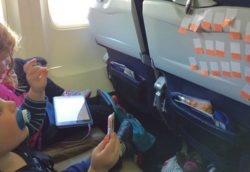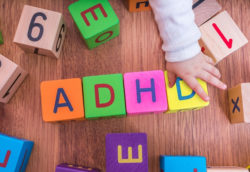Learning disabilities are processing problems which are neurologically based complications. Simple questions for you to answer – does your child struggle with learning in school? Or is scared of reading out loud? Have problems writing or solving a math problem? If there are certain areas that have been constantly problematic, it might indicate the learning disabilities in children.
The processing problems that interfere with learning the basic skills such as writing, reading or math can also have some interference in the higher level skills like organization, time planning, reasoning, memory loss (short term or long term) or attention problems. Such learning disabilities do have an effect on the academic life but more than that, it can cause an impact on the relationships with family or friends and at workplace etc.
What are Learning Disabilities and what causes learning disability?
Learning disabilities is an “umbrella term” which covers a variety of learning problems. Since we learn reading, writing and other basic skills in the school, it becomes easy to recognize the problems during school years. The signs and symptoms of learning disabilities are most often diagnosed during the early ages of life. However, in many, it becomes difficult to evaluate the problem until the kids reach their secondary education or later in the workplace. There are also few who never comprehend throughout their lives and go through without knowing what difficulties they had during academics or with family relationships or job life.

Learning disabilities are usually compared to the problems with learning which are primarily related to the result of visual, motor skill or hearing handicaps or of mental retardation, emotional disturbance, environmental, cultural, or economic problems or disadvantages.
It can be tough to face the fact that your kid might possibly have such a disability and is suffering. But you must know that Children with learning disability can and do succeed. In general, the person with the learning disability is of average or above average intelligence. A learning disability is not a problem with intelligence or motivation nor is the kid lazy or dumb. They are as smart as any other person but their brains work differently. The difference is how the brain receives the information and processes it.
Signs and Symptoms of Learning Disabilities and Disorders:
Learning disability children do not look very different from the other kids. Only that the child might struggle with reading, spelling or cannot understand math. Some cannot say or communicate loud and so on. The problems are different for different kids but it is not very difficult to identify learning disability. Although it is a wide variation of symptoms or profile that you have to look for proof of the problem. However, there are age-related warning signs that you can catch about their disability and help them to cope up with it.

Symptoms of learning disabilities in PRESCHOOLERS are:
- Have problems pronouncing words
- Has trouble finding the right word.
- Difficulty in processing rhyming words.
- Trouble learning the numbers, alphabets, shapes, colors, days of the week.
- Trouble following directions or learning routines.
- Trouble with motor skills and controlling the pencils, crayons, and scissors, or coloring along the lines.
- Trouble with zippers, buttons, snaps, learning to tie their shoes.
Symptoms of learning disabilities: AGE 5-9 are:
- Trouble learning the relationship between letters and sounds.
- Unable to merger or balance sounds to make words.
- confuses simple words when reading.
- Slow to learn new skills.
- Consistently misspells words and makes recurrent frequent errors.
- Trouble learning basic math concepts.
- Difficulty telling the time and recalling sequences.
Symptoms of learning disabilities: AGE 10-13 are:
- The difficulty with math skills or reading comprehension.
- Trouble with open-ended assessment questions and word problems.
- Dislikes reading and writing and also dodge reading aloud.
- Poor handwriting.
- Poor organizational skills (homework, bedroom, desk is shambolic and disorganized)
- Trouble following classroom explanations and discussions, troubles in expressing thoughts aloud
- Spells the same word in another way in a single document

Types of Learning Disabilities:
1. Auditory Procession Disorder (APD): This type of a disability is also known as Central Auditory Processing Disorder where the sound that travels unimpeded through the ears is adversely affected when processed or interpreted by the brain. The kids with APD do not recognize the subtle difference between sounds in words even if the sound is loud and clear enough to be heard in normal conditions. They also find it difficult to tell the direction of the source of sound or make a sense of the order or to block the competing background sounds.
2. Dyscalculia: A specific type of learning disability which affects a person’s ability to understand numbers and difficulties in learning math concepts. Individuals with this type of a learning disability sometimes also have poor comprehension of math symbol. Many struggles to memorize or organize numbers. They face difficulties telling about time and troubles with counting.
3. Dysgraphia: This is a particular type of learning disability which affects the person’s handwriting ability which means the motor skills are affected too. The problem could be various like handwriting, spacing, poor spatial planning, inconsistency on paper or poor spelling etc. There is also difficulty in thinking and writing the same.
Symptoms of Learning Disability in Writing:
They include problems with:
- Poor neatness and consistency of writing
- Difficulty in accurately copying letters and words
- Poor spelling consistency
- Poor writing organization and coherence
4. Dyslexia: The learning ability where the reading is affected and related to the language based processing skills. The severity changes in each individual’s case but affects reading fluency and decoding, comprehending, recalling, writing, sometimes speech, spelling and exists with other disorders too. The “Language-Based Learning Disability” us another name for Dyslexia.
Symptoms of Learning Disability in Reading or Dyslexia:
Signs of reading difficulty include problems with:
- Poor letter and word recognition
- Difficulty in understanding words and ideas
- Difficulty in reading speed and fluency
- Difficulty in general vocabulary skills

5. Language Processing Disorder: A specific type of auditory disorder (APD) which has difficulty in the meaning attached to the sound groups that form the words, stories, and sentences. APD which affects the sounds coming from the brain’s interpretation, a Language Processing Disorder relates to only the processing of the language. LPD affects the expressive language or the receptive language.
6. Non-Verbal Learning Disabilities: This type of disorder which usually shows up a significant discrepancy between the higher verbal skill and weaker motor or visual-spatial along with social skills. Typically this is a type of disorder where the individual with NLD has trouble interpreting the nonverbal cues like facial expressions or has poor coordination and body language.
7. Visual Perceptual/ Visual Motor Deficit: This type of a disorder that affects the understanding of the information that the individual sees or the ability to dray and copy. The type of disability which characterizes the term Dysgraphia or Non-Verbal LD results in missing the subtle difference in shapes or printed letters. Sometimes it has losing place frequency or struggling with cutting and motor skills like holding the pencil too tight or poop eye/ hand coordination.

Other Disorders Related which Make Learning Difficult Are:
1. ADHD: Attention Deficit Hyperactivity Disorder is a disorder that includes problem staying focused and paying attention to anything or difficulty in controlling behavior and hyperactivity. The ADHD however, is not considered a learning disability, but researchers have mentioned that 30-40 percentage of the kids with ADHD have a specific learning disability that interacts making it extremely challenging for the kids.
2. Dyspraxia: There are many reasons why kids might have trouble with reading. One of the most common ones is dyslexia(R). This type of disorder also has difficulties in music control causing a problem in kids with movement and coordination, speech and language and affects learning. Although this is not a learning disability kids with Dyspraxia often exist with the learning disorder Dyslexia, dyscalculia or ADHD.
3. Executive Functioning: Inefficiency in the cognitive management system skill of brain that affects the neuropsychological processes such as organizing, planning, paying attention, memorizing and recalling details, managing time and space. Although this is not an LD however, the different patterns of weakness in executive functioning are mostly the same as that seen in the learning profiles of individuals having LD or ADHD.
4. Memory: Three types of memory are important to learn which includes working memory, short-term memory, and long-term memory. The processing of both verbal and non-verbal information happens via these memories and if there are deficits in any of the types, it leads to impairment. In few cases the deficit could be in all types of memory, the ability to store and recall information required to carry out tasks is impaired.
5. Autism: The difficulty in mastering certain skills specific to academic like STEM from persistent developmental disorders such as Asperger’s syndrome and autism. Children with autism disorder may have troubles communicating and reading body language or any basic learning skills. Also, they have difficulties in making friends and eye contact with anyone.

Are There any Treatments For Learning Disabilities?
Consider this as explained in le-man terms, the brain wiring which has disruptions causing the issues in communication and makes it difficult to process the information obtained. For example, if your telephone service is down, the area of the city affected will ask the phone company to fix the issue by re-connecting or re-wiring the lines and connections.
Similarly, the right learning conditions can occur when the brain has the ability to recognize the issue and form the neural connections within. These new neural connections facilitate skills like writing, reading or any difficult connections.
The understanding of the inner working of the brain is something that science is continuing to do and discover more important milestones. The science of learning about learning disabilities and disorders is called neuroplasticity. Neuroplasticity(R) – refers to the brain’s natural ability to change lifelong. Throughout life, the brain is able to generate and form new connections in response to experience and learning. This is the major knowledge which has formed a great base in the new treatments for learning disabilities that take the advantage of the ability of the brain to change. This discovery about neuroplasticity has provided hope for students with disorders. For example, the children who have difficulty in differentiating between the sounds in a word, inventions have now come up with a computer-based learning program that lets the sound to slow down so that the individual can understand them and gradually increase their speed of comprehension. This discovery has led to additional treatments and targets the actual cause of learning disabilities rather than simply offering strategies to cope up with the weakness and compensate it.









































